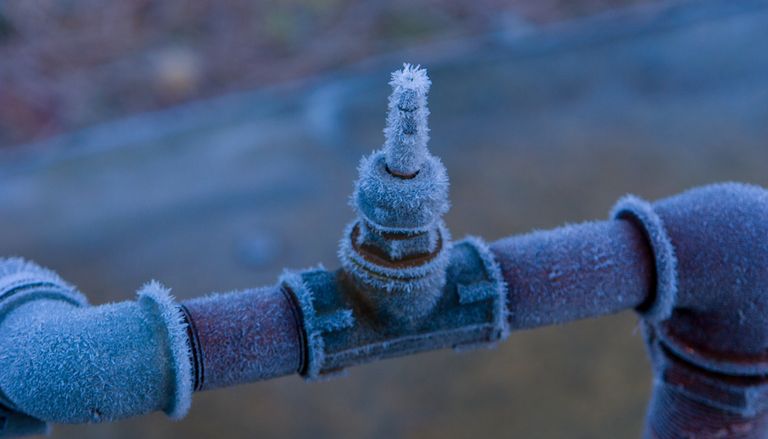How to Protect Pipes from Cold Weather Damage: Important Tips
How to Protect Pipes from Cold Weather Damage: Important Tips
Blog Article
How do you really feel in regards to 6 Ways to Prevent Frozen Pipes?

Cold weather can ruin your pipes, specifically by freezing pipes. Here's exactly how to avoid it from taking place and what to do if it does.
Intro
As temperature levels decline, the risk of frozen pipelines boosts, possibly leading to costly fixings and water damages. Recognizing just how to avoid frozen pipelines is crucial for homeowners in cold climates.
Recognizing Icy Pipes
What creates pipes to freeze?
Pipes freeze when subjected to temperatures below 32 ° F (0 ° C) for extended periods. As water inside the pipes freezes, it broadens, putting pressure on the pipeline wall surfaces and possibly creating them to break.
Risks and problems
Icy pipes can cause water system interruptions, building damages, and costly fixings. Burst pipelines can flood homes and create substantial architectural damage.
Indicators of Frozen Piping
Identifying frozen pipelines early can stop them from bursting.
How to identify frozen pipes
Seek reduced water flow from taps, uncommon smells or sounds from pipelines, and noticeable frost on subjected pipes.
Avoidance Tips
Shielding at risk pipes
Cover pipelines in insulation sleeves or make use of warm tape to shield them from freezing temperatures. Concentrate on pipes in unheated or external areas of the home.
Heating techniques
Keep indoor spaces adequately warmed, especially areas with pipes. Open up closet doors to permit cozy air to flow around pipes under sinks.
Safeguarding Outdoor Pipes
Garden pipes and outside faucets
Disconnect and drain garden tubes prior to winter season. Mount frost-proof spigots or cover outside taps with protected caps.
What to Do If Your Pipes Freeze
Immediate activities to take
If you presume frozen pipelines, keep taps open up to eliminate pressure as the ice melts. Make use of a hairdryer or towels soaked in warm water to thaw pipes gradually.
Long-Term Solutions
Architectural adjustments
Take into consideration rerouting pipes far from exterior wall surfaces or unheated areas. Include extra insulation to attics, cellars, and crawl spaces.
Upgrading insulation
Purchase top quality insulation for pipelines, attic rooms, and walls. Appropriate insulation aids maintain constant temperature levels and reduces the danger of frozen pipes.
Final thought
Preventing frozen pipes needs positive actions and fast responses. By understanding the causes, indications, and preventive measures, house owners can secure their pipes throughout cold weather.
5 Ways to Prevent Frozen Pipes
Drain Outdoor Faucets and Disconnect Hoses
First, close the shut-off valve that controls the flow of water in the pipe to your outdoor faucet. Then, head outside to disconnect and drain your hose and open the outdoor faucet to allow the water to completely drain out of the line. Turn off the faucet when done. Finally, head back to the shut-off valve and drain the remaining water inside the pipe into a bucket or container. Additionally, if you have a home irrigation system, you should consider hiring an expert to clear the system of water each year.
Insulate Pipes
One of the best and most cost-effective methods for preventing frozen water pipes is to wrap your pipes with insulation. This is especially important for areas in your home that aren’t exposed to heat, such as an attic. We suggest using foam sleeves, which can typically be found at your local hardware store.
Keep Heat Running at 65
Your pipes are located inside your walls, and the temperature there is much colder than the rest of the house. To prevent your pipes from freezing, The Insurance Information Institute suggests that you keep your home heated to at least 65 degrees, even when traveling. You may want to invest in smart devices that can keep an eye on the temperature in your home while you’re away.
Leave Water Dripping
Moving water — even a small trickle — can prevent ice from forming inside your pipes. When freezing temps are imminent, start a drip of water from all faucets that serve exposed pipes. Leaving a few faucets running will also help relieve pressure inside the pipes and help prevent a rupture if the water inside freezes.
Open Cupboard Doors
Warm your kitchen and bathroom pipes by opening cupboards and vanities. You should also leave your interior doors ajar to help warm air circulate evenly throughout your home.

I recently found that content on How to Prevent Your Pipes From Freezing while perusing the web. Liked our piece? Please share it. Let others check it out. Thank you so much for your time invested reading it.
Visit Our Site Report this page